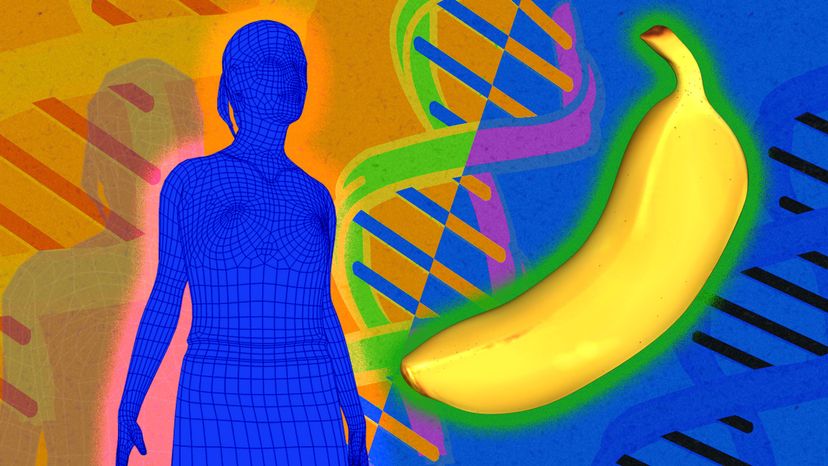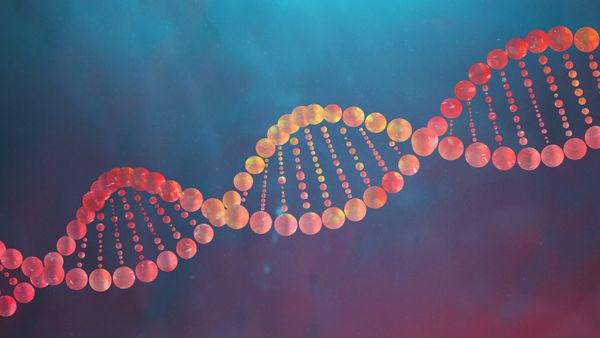First, it's important to understand the difference between DNA and protein products. Brody says that an easy way to do this is to think of DNA as the blueprint of a house, and protein products as the actual house because all of the information is in there. Then, think of human DNA as a blueprint of a ranch home and banana DNA as that of a colonial-style home. In each house, a bunch of things are similar (plumbing, bathrooms, kitchen) but the end products are both quite different. That's how it works with humans versus just about everything else, from bananas to chimpanzees.
The second thing to keep in mind is that genes, which are the regions of the DNA that code for these proteins, only make up 2 percent of your DNA.
For this particular experiment, scientists first looked at the sequences of genes in a typical banana genome. "We then used these DNA sequences to predict the amino acid sequence of all the proteins that would be made from those genes," Brody says, noting that the protein sequences were placed in a file. "We then did the same process for all human genes."
Next, the scientists compared the protein sequence from each banana gene to every human gene. "The program compares how similar the sequence of the banana genes are to each human gene," he says, noting that the degree of similarity could range 0 to 100 percent. "The program kept any matches that were more similar than one would expect by chance." The program continued doing this, gene by gene.
All told, more than 4 million comparisons were done, resulting in about 7,000 best "hits" between the two genomes. Then, the percent similarity score for each of those hits was averaged. "This gave us the result of about 40 percent," he says. "This is the average similarity between proteins (gene products), not genes." Gene products or proteins are the biochemical material resulting from a gene becoming functional. "Of course, there are many, many genes in our genome that do not have a recognizable counterpart in the banana genome and vice versa."
If that's a bit difficult to chew and swallow, here's a more simplified breakdown. Essentially, they took all of the banana genes and compared them one at a time to human genes. From that, they culled a degree of similarity (if the banana had the gene but the human didn't, that didn't get counted). About 60 percent of our genes have a recognizable counterpart in the banana genome! "Of those 60 percent, the proteins encoded by them are roughly 40 percent identical when we compare the amino acid sequence of the human protein to its equivalent in the banana," Brody adds.
It may seem shocking that so many genes are similar in two such vastly different things as person and banana. But actually, it's not. "If you think about what we do for living and what a banana does there's a lot of things we do the same way, like consuming oxygen. A lot of those genes are just fundamental to life," Brody says.


